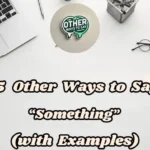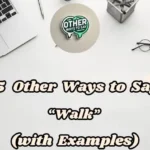The word “new” is a great starting point, but the English language offers many alternatives that can add nuance and precision to your descriptions. Depending on the context, you can choose a word that highlights freshness, originality, or modernity. Here are 15 other ways to say “new,” each with its own tone and application.
What is Another Word for New?
- Fresh
- Recent
- Novel
- Modern
- Current
- Latest
- Brand-new
- Original
- Innovative
- Newfangled
- Up-to-date
- Contemporary
- Newly-minted
- Cutting-edge
- State-of-the-art
1. Fresh
Fresh conveys a sense of newness by suggesting something recently created, invigorating, or untouched. It carries a vibrant, positive tone, making it perfect for describing a new idea, food, or perspective. Using fresh emphasizes a lively and unspoiled quality, evoking a sense of energy and renewal.
- Example 1: “Your fresh content is so engaging; I love the first blog post!”
- Example 2: “That’s a fresh approach to the problem; it could really energize the team.”
2. Recent
Recent describes something new by focusing on its occurrence in the very near past. This word has a neutral, factual tone, ideal for time-sensitive updates in professional or casual settings, such as news or reports. Using recent highlights, the temporal proximity of an event is noted without any emotional or stylistic flair.
- Example 1: “That’s a recent model of the phone, isn’t it? It looks so sleek!”
- Example 2: “This recent data from the market report is really insightful.”
3. Novel
A novel suggests something new by emphasizing its originality or uniqueness. It has a sophisticated and intriguing tone, suitable for creative and intellectual contexts like literature or innovation discussions. Using novel conveys a sense of ingenuity and unfamiliarity, sparking curiosity and admiration.
- Example 1: “That’s a novel plot for your story; it’s incredibly creative!”
- Example 2: “This is a novel idea for the app feature; it could really set us apart from competitors.”
4. Modern
Modern conveys newness by indicating something is aligned with current trends, styles, or technologies. It has a stylish and progressive tone, perfect for discussions about design, architecture, or contemporary methods. Using modern suggests sophistication, relevance, and a connection to the present era.
- Example 1: “The modern design of your new kitchen looks so chic!”
- Example 2: “This is a modern system for our workflow; it streamlines everything for us.”
5. Current
Current describes something new by focusing on its relevance to the present moment. This practical, time-specific word is great for business, media, or academic contexts where timeliness is key. Using current emphasizes immediacy and applicability to what is happening right now.
- Example 1: “That’s the current style, right? It’s totally in vogue these days.”
- Example 2: “We need to review the current stats from the market report; they’re very useful.”
Related Post: 15 Other Ways to Say “Old” (With Examples)
6. Latest
Latest suggests something new by indicating it is the most recent in a series or a development. It has an excited and trendy tone, great for conversations about tech, entertainment, or updates. Using the latest conveys a sense of being up-to-the-minute and at the forefront of a particular field.
- Example 1: “This is the latest version of the gadget; it’s packed with new features.”
- Example 2: “We just installed the latest software patch, and it fixes all the bugs.”
7. Brand-new
Brand-new conveys newness by emphasizing that something is completely unused or freshly made. It has an enthusiastic and lively tone, perfect for casual or marketing contexts where you want to show excitement. Using brand-new highlights, a pristine, untouched quality, evokes a strong sense of freshness and appeal.
- Example 1: “That brand-new jacket looks fantastic on you; you’re rocking the look!”
- Example 2: “This is a brand-new concept for our next marketing campaign; it’s so exciting.”
8. Original
Original describes something new by emphasizing its uniqueness or its first-of-its-kind nature. It has a creative and positive tone, making it ideal for artistic, academic, or entrepreneurial discussions. Using original highlights the groundbreaking and authentic quality of an idea, earning admiration and respect.
- Example 1: “That’s an original style of painting; it’s truly one-of-a-kind.”
- Example 2: “This original plan for the business could revolutionize the entire industry.”
9. Innovative
Innovative suggests something new by focusing on its inventive or forward-thinking nature. This dynamic and professional word is great for business, tech, or creative contexts. Using innovative approaches emphasizes creativity and the potential to advance or disrupt an industry.
- Example 1: “That’s an innovative feature in your app; it’s a real game-changer.”
- Example 2: “This innovative approach to our process could save us so much time and effort.”
10. Newfangled
Newfangled conveys newness by describing something modern or recently introduced, often with a playful or slightly skeptical tone. It’s an informal and quirky word, perfect for casual or humorous conversations. Using newfangled adds a lighthearted vibe, implying that something is modern but perhaps untested.
- Example 1: “This newfangled device you have looks so futuristic; what does it do?”
- Example 2: “Let’s test this newfangled software and see if it actually works as promised.”
Related Post: 15 Other Ways to Say Change (With Examples)
11. Up-to-date
Up-to-date describes something new by emphasizing its alignment with the most recent information or standards. It has a practical and reliable tone, making it ideal for tech, business, or academic contexts where staying current is crucial. Using up-to-date highlights, relevance, and modernity.
- Example 1: “Your up-to-date resume format looks so professional and clean.”
- Example 2: “We’ve upgraded to an up-to-date system, which is much more efficient now.”
12. Contemporary
Contemporary conveys newness by indicating something that is characteristic of the present time. It has a stylish and cultured tone, great for creative or professional contexts like art or architecture. Using contemporary suggests a connection to modern aesthetics and current culture.
- Example 1: “Your contemporary design for the apartment looks so stylish!”
- Example 2: “This contemporary approach to the project feels so fresh and relevant.”
13. Newly-minted
Newly-minted suggests something new by emphasizing its recent creation or introduction. It has a vivid and slightly formal tone, ideal for professional or creative settings where you want to celebrate a recent debut. Using newly minted conveys a sense of freshness and prestige, as if something was just crafted.
- Example 1: “Congratulations to the newly minted graduate on earning their degree!”
- Example 2: “This newly minted product model is ready to shine in the market.”
14. Cutting-edge
Cutting-edge describes something new by emphasizing its position at the forefront of innovation or progress. It has an exciting and tech-focused tone, perfect for science, tech, or business contexts. Using cutting-edge highlights a pioneering and advanced nature.
- Example 1: “This is cutting-edge tech; that new smartwatch is so advanced.”
- Example 2: “That’s a cutting-edge design for the prototype; it’s truly revolutionary!”
15. State-of-the-art
State-of-the-art conveys newness by indicating something that incorporates the latest advancements and technology. It has a prestigious and high-quality tone, great for tech, medical, or industrial contexts. Using state-of-the-art emphasizes top-tier, modern excellence, representing the pinnacle of new development.
- Example 1: “The new gym has state-of-the-art equipment; it looks incredible!”
- Example 2: “Our new lab setup is state-of-the-art and will boost our research capabilities.”
Conclusion
Leveraging synonyms for “new” is an excellent way to make your writing more engaging. A fresh idea, a groundbreaking design, or an initial concept—diversifying your vocabulary leaves a strong impression on your readers. To discover more ways to express yourself, visit Other Way to Say today.

Thomas Schneider is a language enthusiast and expert in synonyms, dedicated to exploring the beauty of words and their nuanced meanings. With a passion for linguistics and clear communication, Thomas helps readers enrich their vocabulary and understand the subtle art of word choice. Whether you’re a writer, student, or language lover, his insights offer practical tools to elevate your language skills.


